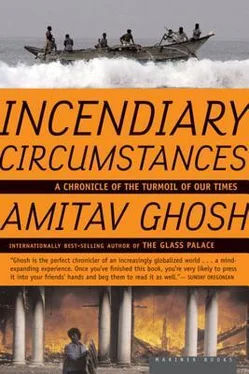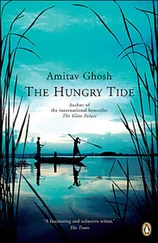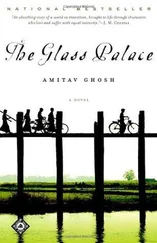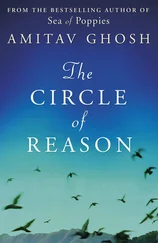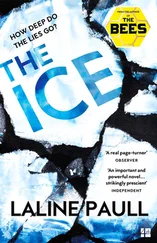Several major cities in India and Pakistan are within a few hundred miles of each other, so once launched, a missile would take approximately five minutes to reach its target. Given the short flight time, military planners on both sides almost certainly have plans to retaliate immediately. In other words, if either nation believed itself to be under attack, it would have to respond instantly. In moments of crisis, the intelligence services of both India and Pakistan have historically had unreliable perceptions of threat. They have also been known to produce outright faulty intelligence.
The trouble will probably start in Kashmir. India and Pakistan have already fought two wars over the state. In recent months the conflict has spilled into other parts of India, with civilian populations coming under attack in the neighboring state of Himachal Pradesh, for example. The Indian government once mooted the idea of launching "hot pursuit" attacks across the border, against insurgents sheltering in Pakistani-held territory. In Pakistan, such assaults are likely to be perceived as an invasion. The risks of escalation are very real.
Zia Mian, a Pakistani-born nuclear expert at Princeton, said to me, "There are soldiers on both sides who have a hankering for a grand act of heroic erasure. A day might well come when these people would say, 'Let's get it over with forever, once and for all, no matter what the cost.'"
On a hot and humid August day, I drove around New Delhi with an old friend, Kanti Bajpai, trying to picture the damage the city would sustain during a nuclear explosion. Kanti has a doctorate in strategic studies from the University of Illinois, and he was among the many antinuclear activists who, on learning of the tests of May ii, immediately went to work. At the time, the BJP's cadres were organizing celebrations in the streets of several Indian cities. Opposition politicians looked on in stunned silence, struggling to gather their wits. It fell to citizens' associations to take on the task of articulating a critical response. Kanti came to national attention at this time.
Kanti believes that India, in pursuing a nuclear program, has gambled away its single greatest military advantage over Pakistan: the overwhelming superiority of its conventional forces. In legitimatizing Pakistan's nuclear program, India's military planners have in effect rendered their ground troops redundant. Kanti sees no threat from China. There is no history of persistent antagonism. No Chinese emperor ever invaded India; no Indian ever sought to conquer any part of China. In thousands of years of close coexistence, Chinese and Indian soldiers have fought only once, during the war of 1962.
Along with a number of other academics, Kanti has been trying to assess the consequences of a nuclear war in South Asia. A friend of his, M. V. Ramana, a research fellow at the Center for Energy and Environmental Studies at Princeton University, had recently computed the possible effects of a nuclear attack on Bombay. It was one of the first such studies to be done of a South Asian city. Ramana's findings caused some surprise: the casualty rates that he cited, for instance, were lower than expected — about 200,000. This was because in his calculations Ramana assumed that neither India nor Pakistan would use bombs much greater than what was dropped on Hiroshima — with a yield of about fifteen kilotons.
We set out on our journey through New Delhi armed with a copy of Ramana's seminal paper. Kanti wanted to apply the same calculations to New Delhi.
We drove up Rajpath, the grand thoroughfare that separates North Block from South Block. Ahead lay the domed residence of the president. This was once the palace of the imperial British viceroy; it is now known as Rashtrapati Bhavan. The palace looks down Rajpath toward a monument called India Gate. In the distance lie the ramparts of the Purana Qila, a sixteenth-century fort.
Ground zero, Kanti said, will probably lie somewhere near here: in all likelihood, between North and South Blocks.
On detonation, a nuclear weapon releases a burst of high-energy X-rays. These cause the temperature in the immediate vicinity to rise very suddenly to tens of millions of degrees. The rise in temperature causes a fireball to form, which shoots outward in every direction, cooling as it expands. By the time it reaches the facades of North Block and South Block, it will probably have cooled to about 300,000 degrees — enough to kill every living thing within several hundred feet of the point of explosion. Those caught on open ground will evaporate; those shielded by the buildings' thick walls will be incinerated.
South Block and North Block, like many of the ceremonial buildings in New Delhi, are made principally of pink Rajasthan sandstone. In Hiroshima and Nagasaki, granite surfaces and ceramic tiles up to several hundred feet from the explosion melted. Sandstone is considerably less dense than granite. The facades of the two blocks will probably melt like candle wax; so will the dome and walls of Rashtrapati Bhavan, and possibly even a portion of India Gate.
As the fireball expands, it generates a shock wave called the Mach front, which delivers a massive blow to everything in its path. This in turn is followed by an enormous increase in air pressure and very high wind velocities. The pressure of the air in the wake of the Mach front can reach several thousand pounds per square inch: it's like being inside a pressure cooker, but with pressure that is many thousands of times greater. The shock can generate winds that blow at speeds of more than 2000 miles per hour.
"Human beings will become projectiles," Kanti said. "If you're here and you're not incinerated immediately, you will become a human cannonball."
We drove toward the Jamuna River, passing the enormous circular building that houses India's parliament. Everyone here, Kanti said, will be either incinerated or killed by the radiation.
We proceeded to the National Archives and the vast bureaucratic warrens that house the government's principal administrative offices. These too will be destroyed. The recorded basis of government, Kanti said, will vanish. Land records, taxation documents — almost everything needed to reconstruct a settled society — will perish from the blast.
The changes in pressure caused by the explosion, Kanti explained, even a small one, will make your lungs burst. You won't necessarily die of burns or poisoning. "Your internal organs will rupture, even if you survive the initial blasts and flying objects."
Later I asked Gautam Bhatia, a New Delhi architect, about the effects of the blast on the city's buildings. Many of the landmark buildings of British-era New Delhi, he wrote to me, have very thick walls and are laterally buttressed with cross walls. These are capable of withstanding great pressure. But many of the city's contemporary public buildings, like some of its five-star hotels, have glass curtain walls. "Such structures have a poor rating for withstanding pressure, poor facilities for egress, and virtually no firefighting equipment."
New Delhi's newer residences will fare very badly. Most of the buildings are designed to withstand winds of about a hundred miles per hour: in the event of a nuclear explosion, they will face wind speeds of up to twenty times that. "The walls would be blown away instantly; if columns and slabs remain, the pressure will rip the building out of its foundations and overturn it."
In Indian cities, many households use canisters of liquid petroleum gas for everyday cooking. For about a mile around ground zero, Ramana estimates, these canisters will explode.
Kanti explained to me that the geographical spread of New Delhi is such that a single fifteen-kiloton nuclear explosion could not destroy the whole area. He estimated that the casualty figures for New Delhi would be much lower than those that Ramana had cited for Bombay: as low, potentially, as 60,000. Only the central parts of the city would be directly affected. "The city would continue to function in some way," Kanti said, "but its municipal, medical, and police services would be in total chaos. The infrastructure would disappear."
Читать дальше
